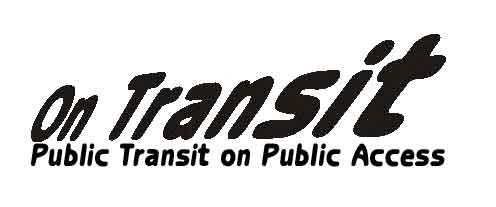
I was hoping for an interview from someone at the Portland Streetcar office while on my trip to Portland in October. I had e-mailed in advance, but hadn't set up anything specific, and continued to check my e-mail once I got to Portland.
In the meantime, on Sunday I went riding the vintage trolley with my mother. The vintage trolley runs in the fairless square area in between the big Max Light Rain trains. As we rode the first car, I started talking to the conductor, Bonnie Trout. Her father had been a streetcar conductor in Portland in the 1920's, and she had his Portland Streetcar pin on her conductor cap.
I also talked to the motorman, and the motorman's trainee. They talked about how the controls of the streetcar run, and also a little about why people in Portland are so interested in history, and in the historic continuity of their transportation system. They pointed out to me that it was the work on returning the vintage streetcars to the city that got the Max light system going.
That evening I caught the Amtrak train in Portland to visit friends in Seattle. The Sunday evening train was packed. Amtrak offers regular service along this corridor, and my seat-mate explained to me that the states of Oregon and Washington have established passenger train priority along this corridor, so you can fairly depend on the accuracy of the timetables. The trains are also subsidized partly with funds from Washington and Oregon state.
That train, the Cascades, offered a great quick ride between the cities. They showed a movie, Spiderman II, on the overhead video monitors, and you could plug any regular miniplug headphones to hear the sound. I didn't watch the movie, I read.
The Lounge car on the Cascades is called the Bistro car. There are also plug-ins at the seats so you can plug in your laptop if you are on a work trip.
In Seattle I rode the Waterfront Streetcar. The first train I got on, the conductor was helpful but didn't want to talk on camera. She recommended another conductor, and I followed her directions to wait for his train. His name was Ira, and he started conducting on the streetcars a week after they started their regular service, in the late 1970's.
The Seattle waterfront streetcar uses streetcars that had run regular service in Melbourne Australia. They run along the waterfront and into the Pioneer Square and International District neighborhoods. For the most part the line is single track, with some double track sections to allow cars to pass. I used my bus transfer to ride it – it runs as route 99 of the King County transit system.
Ira told me that the line was in danger, because the Seattle Art Museum and its rich trustees wanted to build a sculpture park where the streetcar barn was, and that King County transit might not want to put out the money to build a new one at a new location.
I also visited the new Seattle Public Library, by architect Rem Koolhaus. Libraries and transit have always gone together for me, for I got my first transit experiences riding the bus downtown to the library in Billings, Montana, where my family moved when I was in 7th grade. I end the show with a little tribute to the elevator, another mass transit device. The elevator shafts at the Seattle Library are partly clad in glass, so you can see the inner workings, and it is very fascinating, or at least I think so.
Back in Portland I found out that the Project Manager of Portland Streetcar, who I so wanted to interview, was busy the next few days and I wouldn't be able to meet her. But we set up a phone interview that I could make when I was back in Minneapolis, and I used this sound to explain the line.
The next couple days I rode the Portland Streetcar to get lots of video of it. It is smooth and beautiful and runs in a regular traffic lane. It has transformed the Pearl District, a neighborhood near the Portland train station, from several blocks of former train yards into a European city of five and six story buildings with retail on the first floor and housing above, streets that don't have so much car traffic for the density there, beautiful parks, and the streetcar to tie it all together. It is an amazing example of the power of transit to make a place beautiful and livable. One of the new buildings also installed a sign that says, "Go By Streetcar," to echo the sign on the tower of the Portland train station, "Go By Train."
Back to On Transit home
Visit Sloppy Films
Visit A Carfree Home Page
Visit Transit for Livable Communities
Visit Metro Transit

Contact: E-mail me